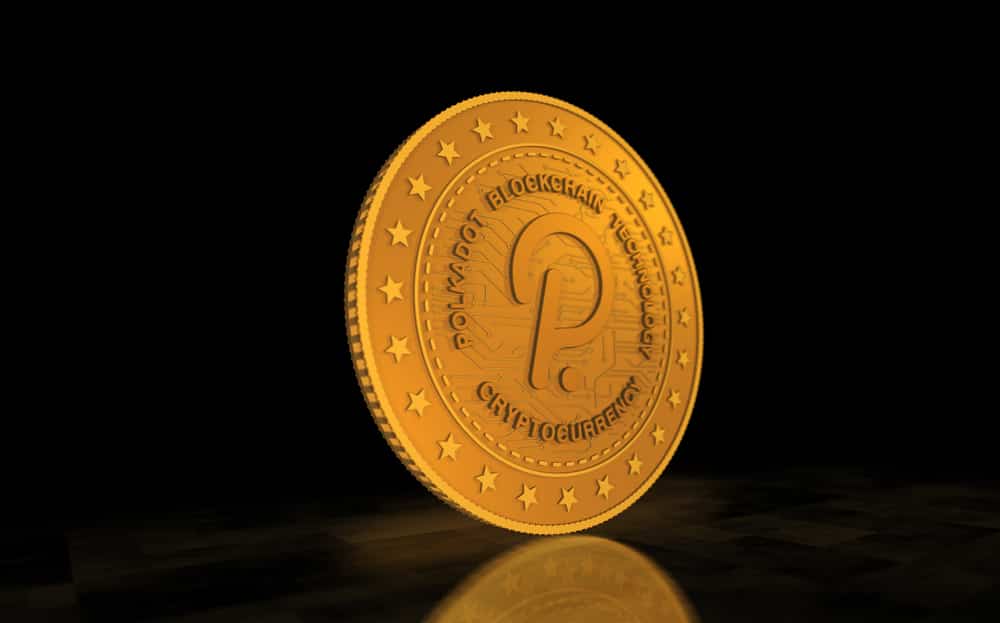
Polkadot is an open-source multichain network that runs on the Ethereum blockchain. Using oracle technology, it connects blockchains together, facilitating their interoperability. The goal of this network is to create a decentralized web, Web 3.0, which allows the transfer of information between different blockchains. DOT, Polkadot’s native token, is the 9th largest cryptocurrency in terms of market cap.
How to buy DOT
1. Open an account with an exchange platform
The best platforms for buying DOT are Coinbase and Binance. US residents intending to use the Binance platform are limited to the Binance US version, which features know-your-customer (KYC) guidelines from the SEC. These require Americans to provide their social security numbers, their driver’s license, proof of address, and a selfie.
2. Open a crypto wallet
A crypto wallet is an application or device that enables you to store your digital assets securely. The most secure wallets are called cold wallets. Most cold storage facilities will resemble a flash drive and can be connected to a computer using Bluetooth or USB. They are used to store crypto assets offline, which places them out of reach from hackers.
3. Purchase DOT
The last step involves buying DOT from a brokerage platform. Here, you can execute different kinds of buy orders. The first is a market order, which instructs your broker to complete your purchase as quickly as possible at the current market price. You may also choose a limit order, which restricts your broker from completing the purchase if DOT prices exceed a certain maximum. You may also set a recurring order, where for instance, you buy a specified amount of DOT every last day of the month, daily, or weekly. You may also set a stop limit above your order price, which limits the broker from completing the buy if the stop limit is reached.
Best wallets for storing DOT
1. KeepKey
We have established that the most secure wallets for storing DOT, and any other cryptocurrency for that matter, are cold wallets. There are several cold wallets in existence today, and these vary greatly in price. If you’re looking for a cheap wallet that gets the job done, KeepKey is your best bet. It can connect to a computer via a USB, and it supports ERC-20 tokens such as Polkadot. It also supports other major crypto coins such as BTC, ETH, and Litecoin, all for the low cost of approximately $30.
2. Trezor Model T wallet
Trezor is a market leader in the world of cold wallets, and the Model T offers top-notch security with a simple setup process. It can connect to a computer using Bluetooth or USB. Once connected, one just needs to visit trezor.io/start, follow the prompts, and the setup process will be completed in minutes.
The wallet also features a touchscreen display, through which you can manage the coins in your wallet. It is compatible with a wide range of crypto tokens, and it offers large storage space.
Why buy DOT?
Polkadot’s functionality can be divided into three categories; governance, staking, and bonding.
Governance
When one holds DOT, they acquire voting rights over decisions such as upgrades to the network and any other changes made to the blockchain. The voting rights are proportional to the amount of DOT each voter stakes.
If a DOT holder does not exercise their right to vote, their voting power is delegated to a council of 6-24 elected members. This council then votes on behalf of the absentee voter.
Staking
The Polkadot chain utilizes a proof-of-stake (PoS) consensus mechanism. This means that DOT holders can stake their tokens to facilitate the security and authenticity of the network. In return, they earn staking rewards in the form of DOT.
One can stake their tokens by either being a validator or nominator. Nominators are mainly tasked with voting for validators. Validators, in turn, run a node on the network that runs non-stop to validate transactions on the blockchain. This way, they contribute to the smooth running of the network. Both validators and nominators earn rewards for their contribution to the network.
Bonding
DOT can be used to create new blockchains on the network, which are called parachains. To do this, the creator needs to deposit DOT in a process called bonding. An application developer on the Polkadot chain, for example, may utilize a parachain to reduce congestion on the main network. By routing all their application’s traffic through a parachain that then connects to the main network, they can reduce transaction times and increase execution speeds.
Key factors to keep in mind when buying DOT
Polkadot and cryptocurrencies, in general, are speculative assets that carry a significant amount of risk. Polkadot is a relatively new project, and as such, has not been tried and tested like older blockchains.
What’s more, though Polkadot, along with several other blockchains, has been dubbed Ethereum killers, Ethereum is set to complete the launch of Ethereum 2.0 in 2022. This will see this popular chain switch to the proof of stake model, which will greatly reduce gas fees and increase transaction speeds. This will bring stiff competition to smaller chains like Polkadot, who were capitalizing on the low fees and faster transactions.
Further, Polkadot has no maximum supply and thus is not immune to inflation. Due to this increased supply, if its demand fails to match the supply, its value may greatly suffer.
Conclusion
Polkadot is a multichain network on the Ethereum blockchain. Its main goal is to facilitate the interoperability of different blockchains, creating truly decentralized Web 3.0. One can buy DOT from popular exchanges such as Binance and Coinbase. The major redeeming factors of this chain are its governance model, staking, and bonding. However, before investing in DOT, you should do your due diligence and consider all the risks involved.







